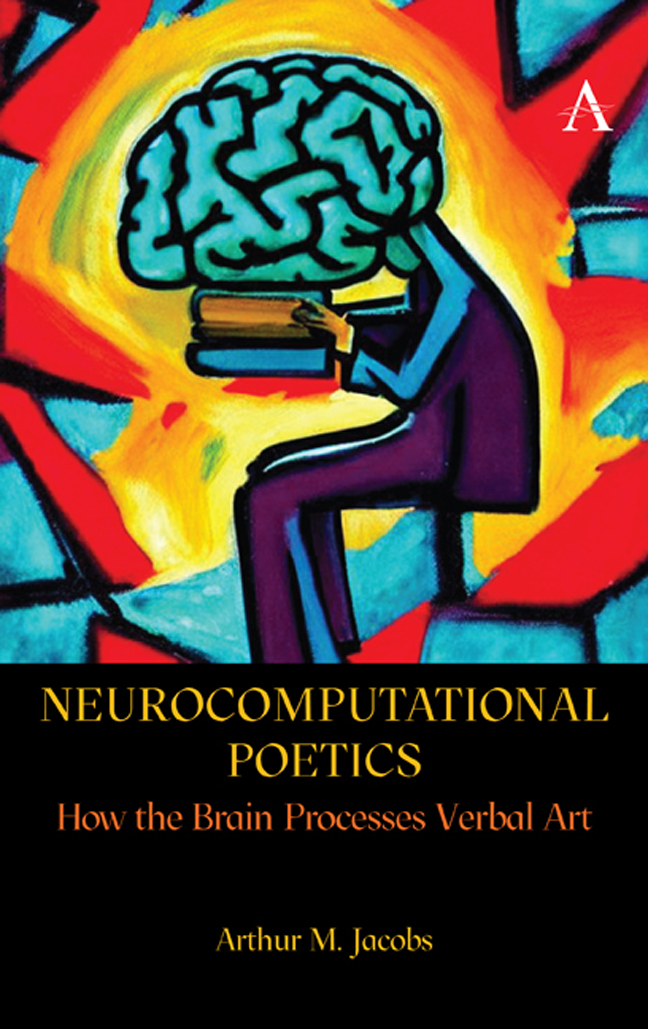Book contents
- Frontmatter
- Contents
- Acknowledgements
- Dedication
- Preface
- 1 Introduction: The Two Boons of an Unnatural Daily Activity
- 2 Models and Methods
- 3 Text Analysis
- 4 Reader and Reading Act Analysis
- 5 Computational Poetics I: Simple Applications
- 6 Computational Poetics II: Sophisticated Applications
- 7 Neurocomputational Poetics I: Upper Route Studies
- 8 Neurocomputational Poetics II: Lower Route Studies
- 9 Conclusions
- References
- Index
3 - Text Analysis
Published online by Cambridge University Press: 01 March 2024
- Frontmatter
- Contents
- Acknowledgements
- Dedication
- Preface
- 1 Introduction: The Two Boons of an Unnatural Daily Activity
- 2 Models and Methods
- 3 Text Analysis
- 4 Reader and Reading Act Analysis
- 5 Computational Poetics I: Simple Applications
- 6 Computational Poetics II: Sophisticated Applications
- 7 Neurocomputational Poetics I: Upper Route Studies
- 8 Neurocomputational Poetics II: Lower Route Studies
- 9 Conclusions
- References
- Index
Summary
To go one stage further, ‘consistency’ and ‘tendency’ are most naturally reduced to ‘frequency’, and so, it appears, the stylistician becomes a statistician
—Leech & Short (2007, p. 34).What gets readers to be ‘on loan’ to an author, thinking, feeling, suffering and acting within them? Why did Sappho and Homer know so well how to move, surprise and please their readers so that they want to read on? The first step when trying to predict how readers’ thoughts and feelings are con-trolled by what they read is to analyze the tools of the trade. Since Aristotle's days, uncountable books and articles from numerous scientific disciplines have been devoted to the issue of revealing the secrets of the power of verbal art. My approach is a ‘from simple to complex’ one. In the previous chapter, I talked about textual back- and foreground features that co-determine reading acts. Here, I will show examples of such features, and in Chapters 5 and 6, I will explain how these features can be quantified via current methods of distant reading and computational stylistics. These include novel techniques of machine learning and attempt to answer questions that are of interest to literary scholars and critics, reading psychologists or people working in education or the book industry. Combining quantitative text and reader analyses with my NCPM will allow me to predict effects of these features on reader responses at all levels of psychological enquiry: neuronal, behavioural and experiential.
Simple Text Features, Tropologies, Close, Distant and Middle Reading
My Ph.D. advisor Kevin O’Regan always told me that reading is just visual perception and thus obeys basic laws of pattern recognition. With one crucial difference: unlike most other visual stimuli, such as visual scenes, texts have a clear advantage for quantitative analyses, because they represent highly structured material, just as with the rule-determined languages they are written in. In general, their elements – letters, words, sentences – are compositional: simple units are combined to form larger, more complex ones, thus allowing an ‘infinite use with finite means’ as Wilhelm von Humboldt put it. And many of these units can be quantitatively described and analyzed into even simpler basic features via statistical and computational methods.
In tackling the central question of how writers can act on my sweat glands, limbic system or feelings through stringing together syllables and words, it is useful to have a close look at their verbal toolbox.
- Type
- Chapter
- Information
- Neurocomputational PoeticsHow the Brain Processes Verbal Art, pp. 57 - 86Publisher: Anthem PressPrint publication year: 2023



